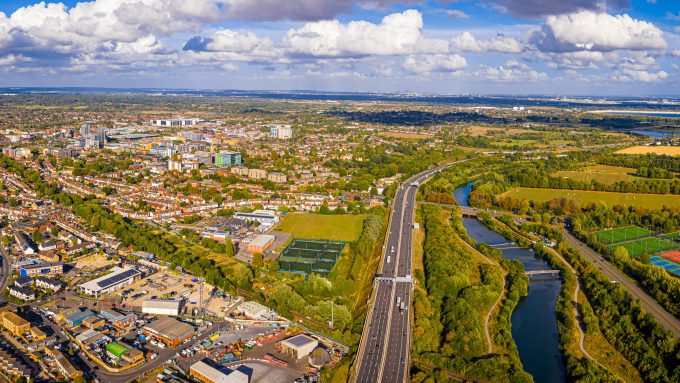
Vive la 15-minute city?

This article features in issue two of Connected Places magazine.
Living in a city means accepting a certain degree of dysfunction – noisy streets, long commutes and poorly designed public spaces. Cities are, by their nature, places of friction and, in many cases, barely contained chaos. It’s why they’re easy to love and loathe in equal measure. The solution to many of our urban woes?
Cue: the 15-minute city, where inhabitants have access to all the services they need – shops, schools, medical care, entertainment – within their immediate walkable or cyclable vicinity. On the one hand, it’s a rather quaint civic vision, yet on the other, it’s quietly revolutionary. Because at its heart the 15-minute city’s main claim is about making urban areas adapt to humans, not the other way around.
It was a French-Colombian professor who coined the phrase. Carlos Moreno specialises in complex systems and innovation at University of Paris 1 Panthéon-Sorbonne. He’s widely regarded to be the leading thinker behind this new model for urban planning that some would argue is purpose built for a hyper-local future.
The 15-minute city requires minimal travel between housing, offices, restaurants, parks, hospitals and cultural venues. Each neighbourhood should fulfil six social functions: living, working, supplying, caring, learning and enjoying.
Anne Hidalgo, Mayor of Paris, made it the centrepiece of her successful 2020 re-election campaign, outlining four major principles – proximity, diversity, density and ubiquity. For Hidalgo, the aim is to create what she calls “a city of proximities”, not only between structures but people.
The idea has really caught on, not least because the COVID-19 pandemic also changed for many of us how we think about our local neighbourhoods. By shuttering city centres, the experience of lockdown vividly reminded us how important social connections are. Many people had never visited shops close to their homes before or eaten at a local restaurant. They didn’t know their neighbours or their local park. The pandemic was a rediscovery of locality.
The experience of lockdown vividly reminded us how important social connections are.

Beyond Paris, cities around the world have been enticed by the 15-minute city vision. So too has business. From Seattle to Cairo and Melbourne to Nottingham, developers are enthusiastically hyping 15-minute city principles in their promotional material. Even the plans for the utopian $40bn desert city of Telosa conceived by American billionaire Marc Lore (location still to be confirmed) are based on “a new 15-minute city design”.
Yet some have warned that we risk losing sight of what the 15-minute city should be about. Prof. Edward Glaeser has some concerns. In an article for the London School of Economics, the American economist described the 15-minute city as “not really a city at all but an enclave, a ghetto, a subdivision”. For Glaeser, all cities should be archipelagos of neighbourhoods, but neighbourhoods that are connected.
“Cities should be machines for connecting humans – rich and poor, black and white, young and old,” he writes. “Otherwise, they fail in their most basic mission and they fail to be places of opportunity.”
Another highly influential urbanist might have had similar concerns. “Neighbourhood is a word that has come to sound like a valentine,” wrote Jane Jacobs in 1961. “As a sentimental concept, ‘neighbourhood’ is harmful to city planning. It leads to attempts at warping city life into imitations of town or suburban life.”
Most urbanists today are likely to agree that it’s good to see proximity, convenience, even community getting more attention. But far more than a marketing slogan, the 15-minute city must also be a framework for making our cities more inclusive, more equitable, and more connected. Only time will tell whether new developments live up to these goals, or if the temptation to throw in a few token, mixed-use elements into a plan for branding purposes proves too great for some.
The proponents of the 15-minute city, like Moreno, would argue that they’re promoting a vision for an environment that empowers city dwellers to remake their cities. To that extent, the concept is not an instruction manual for top-down planning, but actually in line with Jacobs’ organic, human-centred vision of “hundreds of thousands of people with hundreds of thousands of plans” rebuilding the city.

Perhaps the 15-minute city therefore is not only a step into a new future, but also a return to a past when people stuck more to their immediate neighbourhoods. Of course, in a large urban environment those from other neighbourhoods were often seen as strangers. Nor was the infrastructure in place for the equitable and accessible connectivity that we expect today.
The challenge then is harnessing the best bits of that past while at the same time learning from it and embracing the new. What it all boils down to is connectivity. Connecting people to their local communities shouldn’t risk isolating those same communities from each other.
We come to cities for opportunity, freedom and choice, not to end up locked in urban villages.
This article features in issue two of Connected Places magazine.





